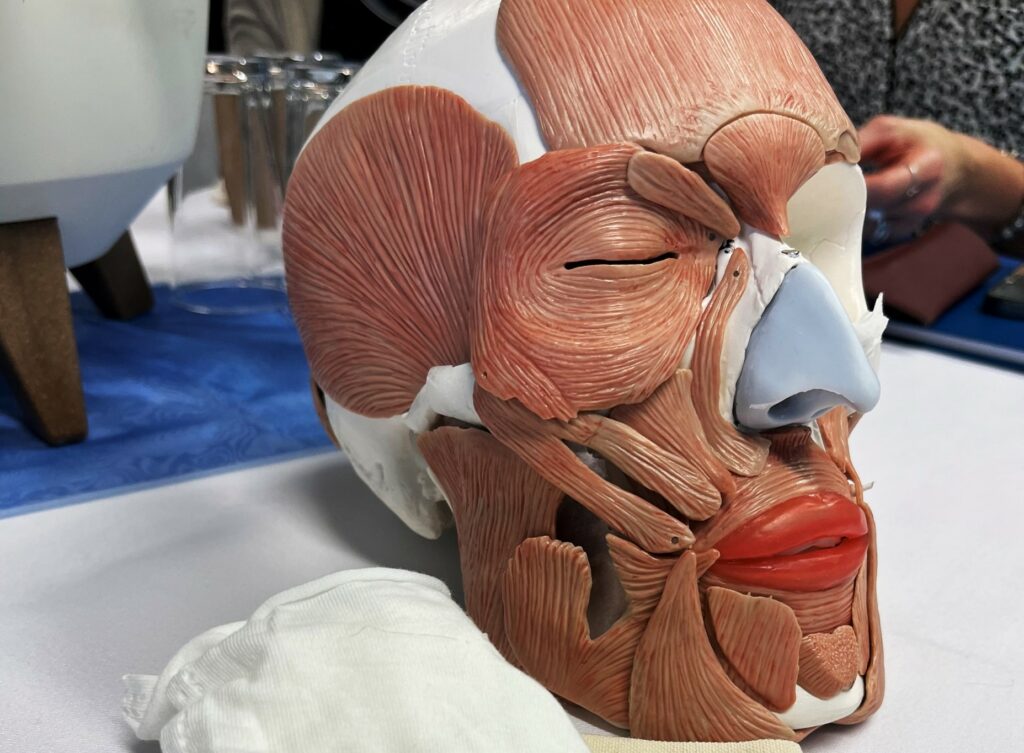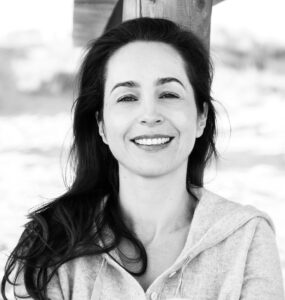HOW TO LOOK AFTER YOUR FACE

Aging is an undeniable and natural process that affects every inch of our bodies, including our faces. Our once plump faces (it’s the fat pads beneath your skin that give it youthful fullness) become less firm and begin to sag.
As we age, our bone structure changes and the supporting ligaments become weaker – without proper support (and thanks to gravity), those fat pads sink lower in your face. This can cause pouches by the side of your mouth (formally known as perioral mounds), loss of jawline definition (and jowls), even a dropping chin.
Most of us begin to notice changes from our 40s which is when collagen and elastin production more significantly decline. This can accelerate through perimenopause and menopause with lower levels of oestrogen further decreasing collagen production and resulting in thinner skin.
Other factors include sun damage (which accelerates the breakdown of collagen and elastin in the skin), genetics, smoking, certain facial expressions, rapid weight loss and general poor skin care.
However, there’s a lot that can be done without invasive procedures. Just as you would work out your leg muscles, you can work out your facial muscles. It might sound too good to be true but it’s evidence backed - a study published in JAMA Dermatology (2018) found that middle-aged women who performed facial exercises regularly over 20 weeks showed improvements in facial appearance, with participants reporting a more youthful appearance and increased satisfaction with their facial appearance.
I developed the FaceToned® method because I wanted something that actually worked and could be easily incorporated into a daily routine. It’s not just a beauty routine; it's a commitment to aging gracefully by empowering you to maintain not just a healthy body, but a vibrant and expressive face as well.
How it works
The FaceToned® programme draws inspiration from Pilates to design exercises that strengthen and tone the facial muscles. It uses a synergy of deep muscle work and surface muscle toning to redefine natural contours and achieve a more taut and youthful appearance.
To tone the neck, cheeks and jowls, try this ‘Lower Facelift’ exercise:
Lengthen the neck upwards and bring the chin up while holding your collarbones with your hands and slightly pulling down. Now bring the chin forward and slightly up to hold your top lip with lower teeth. Then try to touch the tip of the nose with your lower lip. Next, lift up the corners of the mouth and pulse up and slightly down as if smiling for eight counts. Hold this position for eight counts and then relax. Perform three times.
As with all things, the more consistently you exercise your facial muscles, the better. I typically recommend my clients to incorporate facial exercises into their beauty routine five times a week for 5-10 minutes per session. It becomes an important part of their self-care routine and most find it calming and a great break from the busyness of their day.
The benefits of facial exercise
Refined facial appearance: The face not only looks better but feels better, with improved tone and cheekbone definition.
Cheek volume and laughter line reduction: An improvement in the volume of their cheeks and a visible decrease in laughter lines.
Jaw definition: Enhanced definition in the jaw and reduction in jowls.
Brighter complexion: Exercises improve blood circulation which promotes skin health and a bit of a glow.
Tension alleviation: A significant reduction in the tension that can build up in the jaw and neck.
You can follow an online FaceToned® course or arrange a private session with me. For details see www.facetoned.com
CARME FARRE
Carme Farré is a certified teacher in Face Fitness and Pilates, training under renowned experts such as Alan Herdman, Rael Isacowitz of BASI, and Eva Fraser in London. In 2013, she opened her private studio, Studio Carme, in London, where she has dedicated herself to teaching facial exercise to hundreds of clients.
Carme started her journey at 35, demonstrating that FaceToned® is suitable for anyone at any stage of life who wants to ward off the signs of aging, tone their facial muscles or recover muscle functionality.
